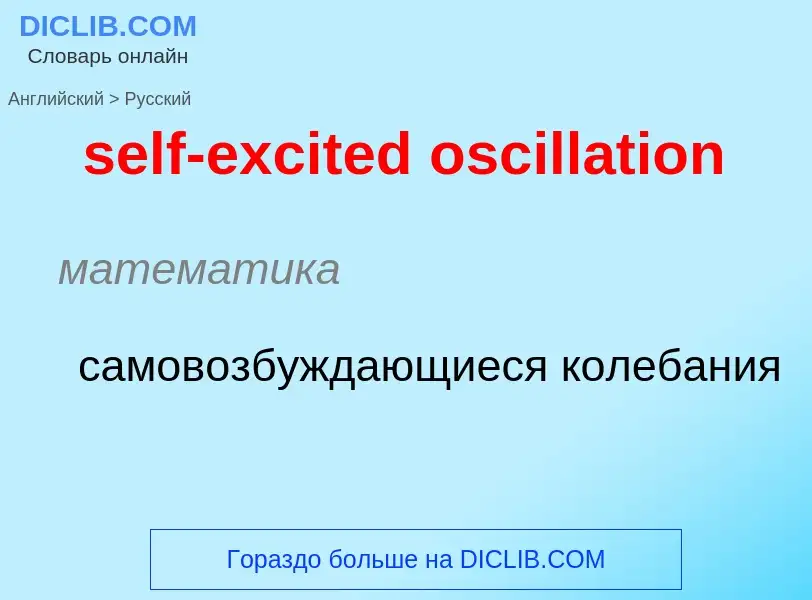Перевод и анализ слов искусственным интеллектом ChatGPT
На этой странице Вы можете получить подробный анализ слова или словосочетания, произведенный с помощью лучшей на сегодняшний день технологии искусственного интеллекта:
- как употребляется слово
- частота употребления
- используется оно чаще в устной или письменной речи
- варианты перевода слова
- примеры употребления (несколько фраз с переводом)
- этимология
self-excited oscillation - перевод на русский
математика
самовозбуждающиеся колебания
общая лексика
самогенерация
общая лексика
самогенератор
[ik'saitid]
общая лексика
возбуждённый
взволнованный
прилагательное
общая лексика
возбуждённый
взволнованный
оживлённый
деятельный
[selfkən'tempt]
существительное
общая лексика
презрение к самому себе
существительное
общая лексика
ненависть к самому себе
[self|'heit-{self}'heitrid]
существительное
общая лексика
ненависть к себе
[self|'heit-{self}'heitrid]
существительное
общая лексика
ненависть к себе
[selfaidentifi'keiʃ(ə)n]
существительное
общая лексика
отождествление своих интересов с интересами какого-л. дела
солидаризация
Википедия
Self-oscillation is the generation and maintenance of a periodic motion by a source of power that lacks any corresponding periodicity. The oscillator itself controls the phase with which the external power acts on it. Self-oscillators are therefore distinct from forced and parametric resonators, in which the power that sustains the motion must be modulated externally.
In linear systems, self-oscillation appears as an instability associated with a negative damping term, which causes small perturbations to grow exponentially in amplitude. This negative damping is due to a positive feedback between the oscillation and the modulation of the external source of power. The amplitude and waveform of steady self-oscillations are determined by the nonlinear characteristics of the system.
Self-oscillations are important in physics, engineering, biology, and economics.


